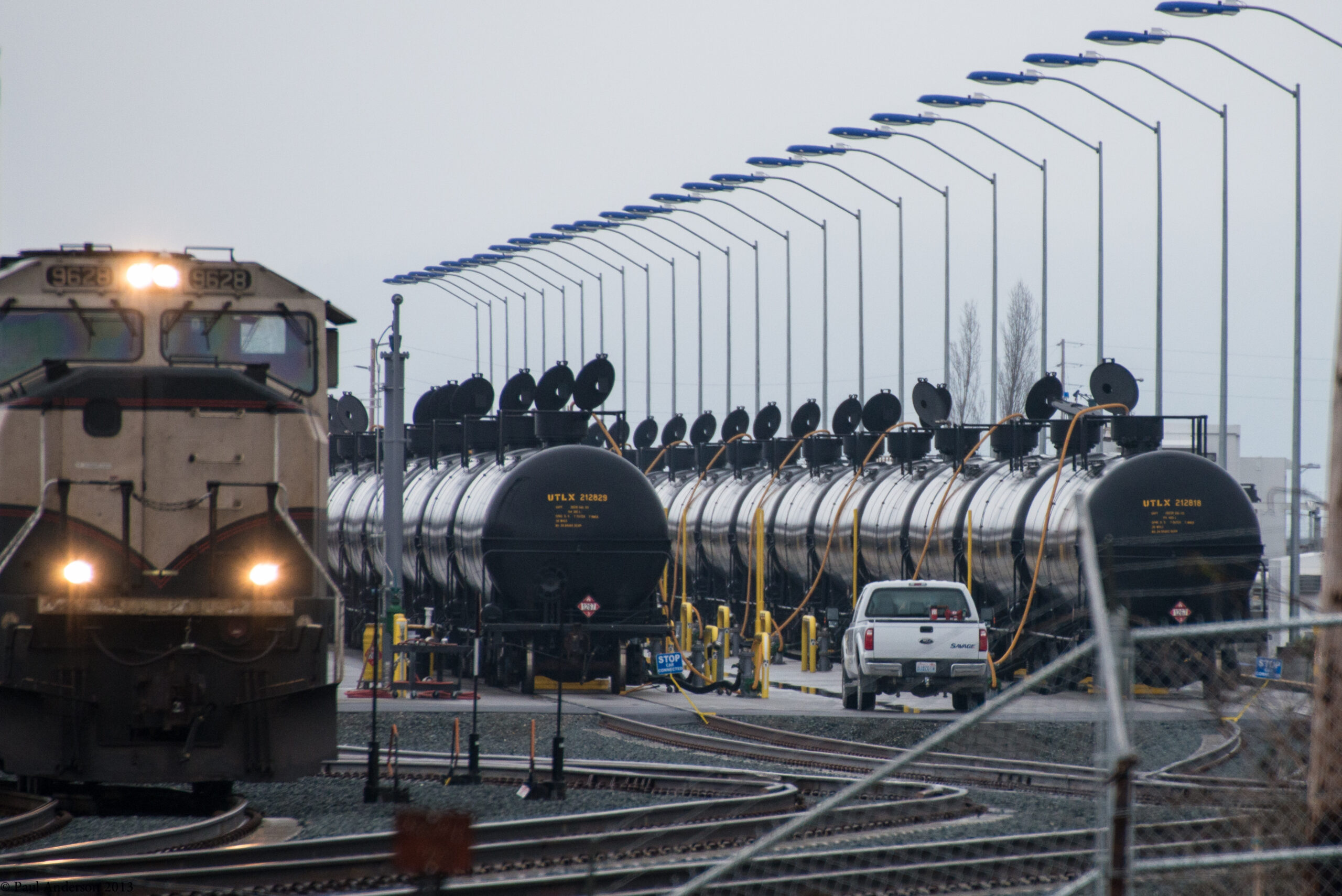![]() President Obama’s rejection of the Keystone XL Pipeline was without doubt a victory for climate protection. It also left many wondering about the significance other oil infrastructure proposals, such as the 15 rail facilities in the Northwest that could handle a million barrels of crude per day.
President Obama’s rejection of the Keystone XL Pipeline was without doubt a victory for climate protection. It also left many wondering about the significance other oil infrastructure proposals, such as the 15 rail facilities in the Northwest that could handle a million barrels of crude per day.
Would new oil depots on Northwest shorelines really increase oil drilling and global carbon pollution? It’s a question that has dogged the increasingly heated debate over oil-by-rail projects.
To answer it, Sightline had previously commissioned a technical analysis of the oil industry and local project proposals. And now the results are in: they would incentivize large-scale oil extraction in both the Canadian oil sands region and the Bakken shale oil formation, perhaps upping our carbon pollution by the equivalent of over 28 million cars on the road. Moreover, it appears that in the absence of Keystone and other pipelines, the Canadian tar sands industry’s growth will rely on oil-by-rail terminals in the Northwest.
Oil Change International (OCI), an independent research group, deployed the oil industry’s own forecasting and modeling tools together with a detailed examination of the Northwest facilities’ configurations. The results are now available in a new report, Tracking Emissions: The Climate Impact of the Proposed Crude-by-Rail Terminals in the Pacific Northwest.
Key findings in the report include:
Propping up Canadian tar sands: In the absence of new pipelines, Northwest rail terminals would be the sole driver of new growth in Canadian tar sands oil.
Multiplying oil extraction and climate pollution: Oil train facilities in the Northwest could unlock as much as 382,000 barrels per day of new tar sands production that would otherwise not be extracted. The resulting greenhouse gas pollution from extra tar sands production could be as much as 106 million metric tons per year of carbon dioxide—the equivalent of doubling the total greenhouse gas pollution of Washington state.
Feeding the Bakken beast: Northwest oil train terminals could also lead to more oil drilling in the Bakken formation, as much as 114,000 barrels per day beyond what would be produced without the terminals. The resulting greenhouse gas pollution from this extra production could be as much as 30 million tons per year of carbon dioxide—the equivalent of doubling the number of cars on the road in Oregon and Washington.
See the full report, Tracking Emissions.



Comments are closed.